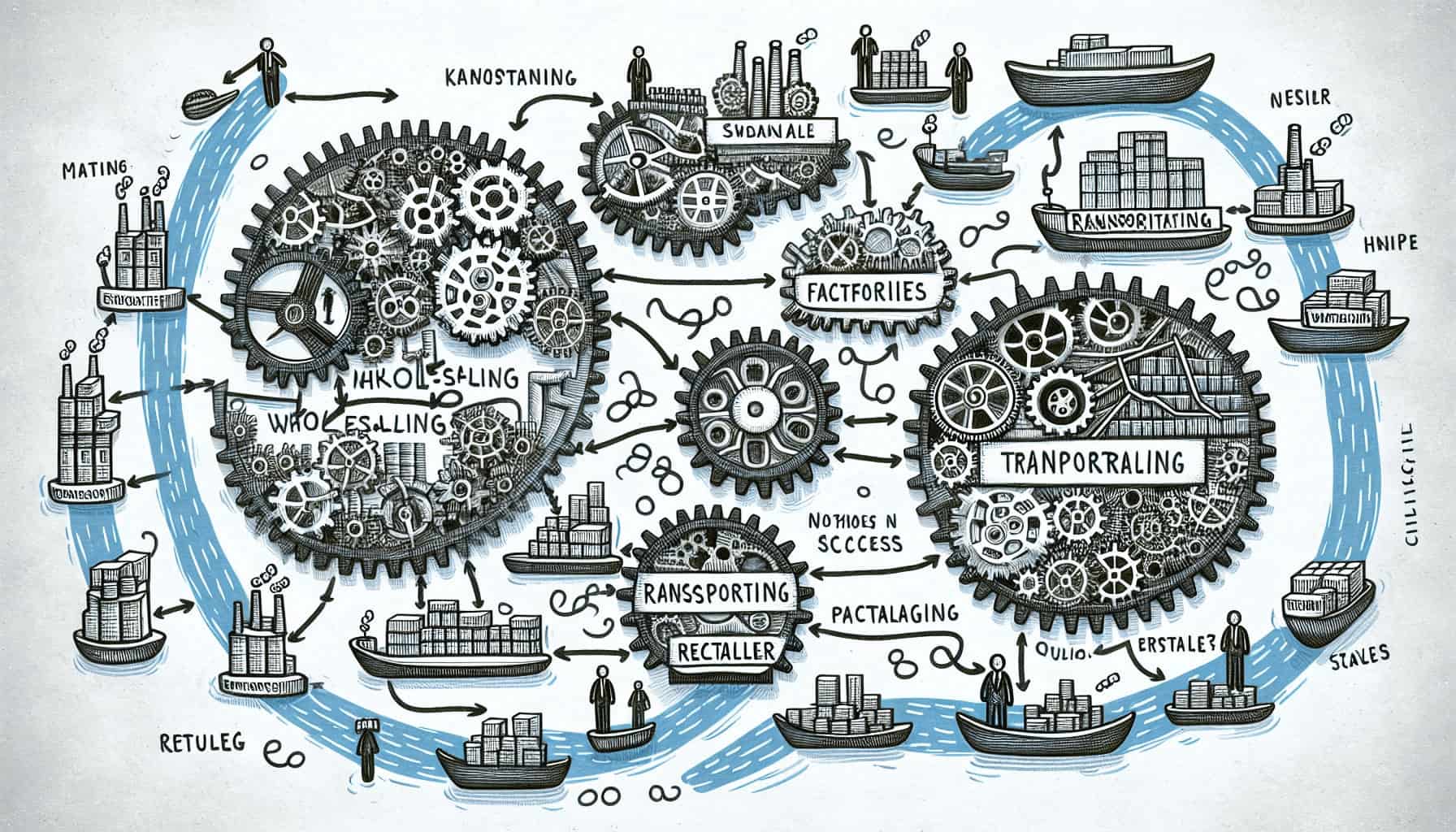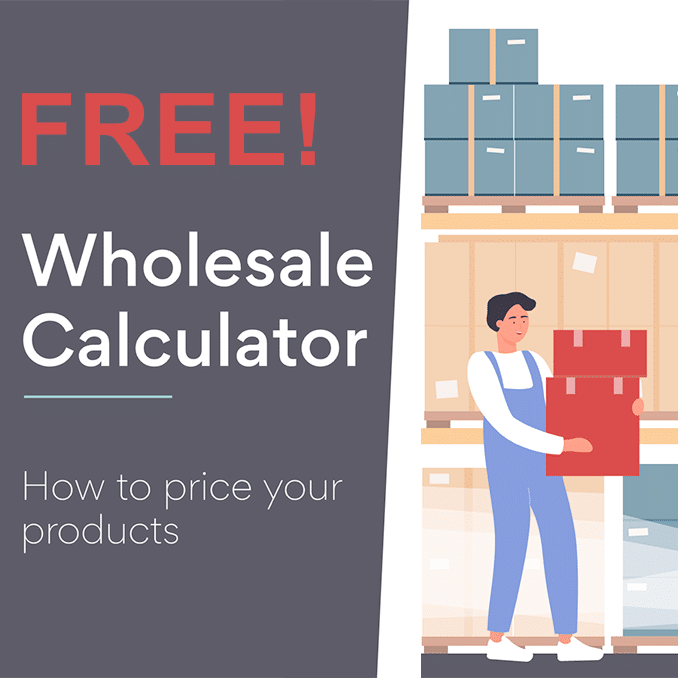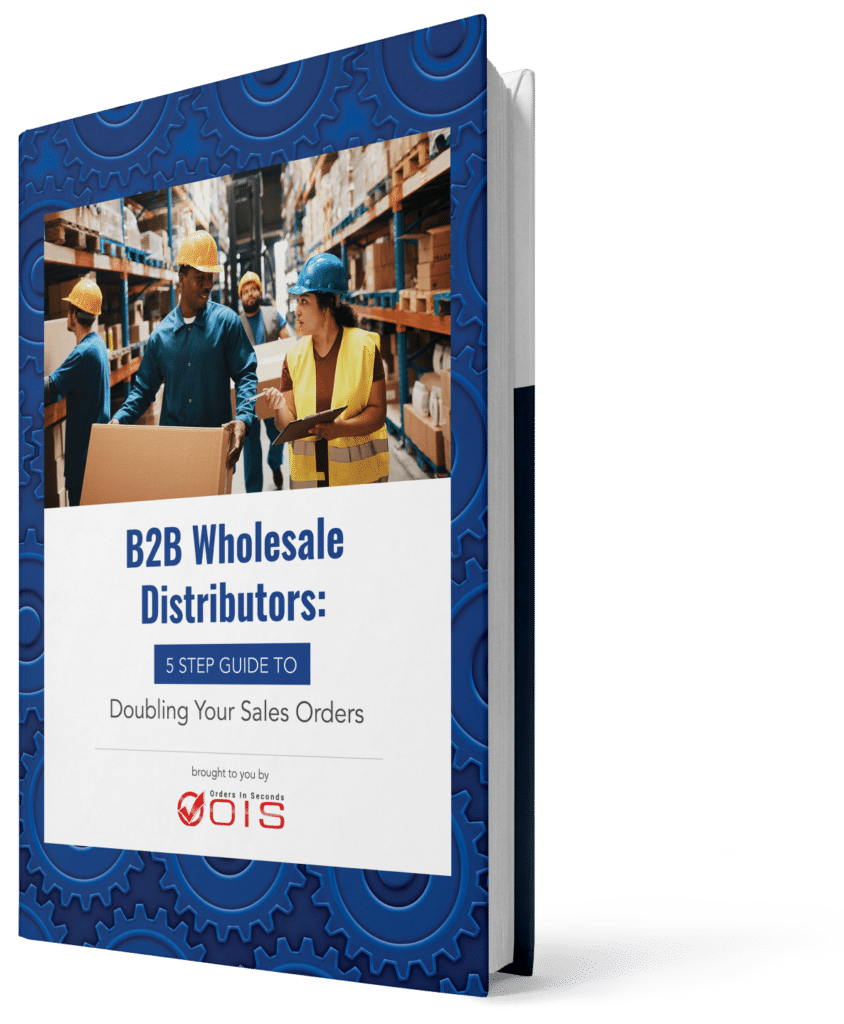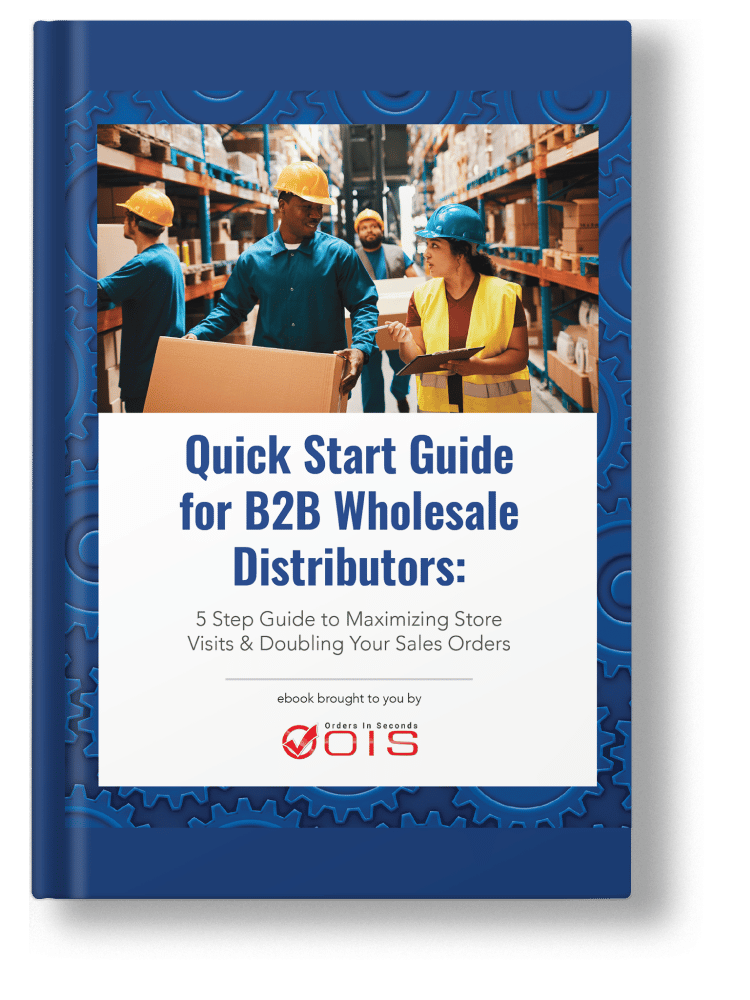Wholesaling, the backbone of the global economy, enables the efficient distribution of goods from manufacturers to retailers and eventually to end consumers. As a business owner, understanding the wholesale landscape and its intricacies is essential for streamlining your supply chain and maximizing profits. Are you ready to unlock the secrets of wholesale mastery and thrive in bulk sales?
In this insightful journey, we’ll delve into the world of wholesaling, dissecting its anatomy, exploring specialized sectors, and uncovering successful strategies used by industry giants. Join us as we navigate the challenges and opportunities of this fascinating domain, empowering you to excel in the competitive wholesale market.
Key Takeaways
- Explore the complexities of the wholesale industry and its business model.
- Learn how to take advantage of cost savings by buying in bulk, adjust prices based on market demand & supplier costs, and optimize supply chain synergy.
- Leverage marketing strategies such as inventory management software and digital tactics to navigate challenges in wholesaling for success.
Table of Contents
- Exploring the Wholesale Landscape
- The Anatomy of Wholesaling
- The Supply Chain Synergy
- Specialized Wholesaling Sectors
- E-Commerce and Digital Wholesaling
- Marketing Strategies for Wholesalers
- Navigating Challenges in Wholesaling
- Case Studies: Successful Wholesale Companies
- Summary
- Frequently Asked Questions
- Optimize Your Wholesale Business with Orders in Seconds
Exploring the Wholesale Landscape

The wholesale industry is a broad and dynamic field, encompassing:
- Manufacturers who produce goods using raw materials
- Wholesalers who buy these goods in bulk at a discounted rate
- Retailers who acquire them at a higher price to sell to consumers
As a vital cog in the economic machine, wholesaling ensures the smooth flow of merchandise and services from producers to end users, ultimately reaching the end consumer.
Consumer products are typically classified into four categories based on purchasing behavior:
- Convenience products
- Shopping products
- Specialty products
- Unsought products
- information.
Wholesalers source these products, which may be physical, virtual, or hybrid, from manufacturers or other wholesalers depending on their business model and supply chain relationships. In this constantly changing market, a core product development team plays a key role in creating successful products by gathering and analyzing relevant information.
The Anatomy of Wholesaling

Wholesaling isn’t just about buying and selling goods; it requires an in-depth comprehension of how the business operates and functions. This encompasses tasks and obligations such as managing inventory, negotiating with suppliers, and securing an appropriate insurance policy to mitigate potential risks. Wholesalers are a fundamental part of the supply chain, serving as a link between manufacturers and retailers, but they do not typically provide product support or have a direct connection to the company from which they purchase products.
The main operations of a wholesale business include:
- Acquiring goods in large quantities
- Supervising the supply chain
- Optimizing delivery routes
- Sustaining customer relationships
- Sourcing wholesale products
To maintain competitiveness and profitability, wholesalers must streamline their purchase, storage, and distribution processes to operate at minimal costs. For valuable insights on the best strategies and avoiding potential mistakes, check out our free ebook, ‘Avoid the Top 5 Mistakes Wholesale’ Distributors Make

Avoid the Top 5 Mistakes Wholesale Distributors Make
The Wholesaler's Business Model
A typical wholesaler’s business model revolves around:
- Procuring goods in bulk from manufacturers
- Distributing them to retailers and other businesses at a discounted price
- Purchasing products in bulk at a discounted rate
- Reselling them in smaller quantities at a higher price to individual retailers
- Generating revenue through this process
Their value proposition is based on the unique benefits and value they provide to their customers, such as retailers or other businesses serving end users.
Wholesaler business models can be diverse, including:
- Merchant Wholesalers
- Agents, Brokers, and Commission Merchants
- Specialty Wholesalers
- Internet Wholesalers
- Full-Service Wholesalers
Each model has its unique product characteristics and caters to specific customer needs and market segments, ensuring that wholesalers can thrive in a competitive landscape.
Buying Goods in Volume
Buying goods in large quantities provides wholesalers with substantial benefits like cost savings, which are accomplished through a sequence of key steps: negotiating prices with suppliers, overseeing inventory, and ensuring timely delivery of goods. This efficient procurement process allows wholesalers to obtain rebates from manufacturers, making it more economical than acquiring items separately.
When buying in large quantities, wholesalers can employ various negotiation techniques, such as:
- Researching suppliers and their competitors
- Establishing rapport
- Requesting bulk discounts
- Counteroffering
- Obtaining competitive quotes
- Taking advantage of seasonal discounts
- Demonstrating the potential value of a long-term partnership
Keeping up-to-date with market trends and supplier information is important, and checking when the page was last edited on supplier websites can be helpful in negotiations. To quickly access this information, simply scroll to the top of the page.
To maximize profitability and remain competitive, wholesalers employ various pricing strategies, such as:
- Cost-plus pricing
- Demand pricing
- Competitive pricing
- Penetration pricing
- Price skimming
- Economy pricing
Market demand directly impacts price dynamics, as high demand allows wholesalers to raise prices and maximize profits, while low demand may necessitate lowering prices to stimulate demand and avoid excess inventory.
Wholesalers also consider fluctuations in supplier costs, such as raw material costs, inflation, supply chain disruptions, changes in demand, and production costs, when determining their prices. By employing strategies like cost-plus pricing, target return pricing, volume-based pricing, and geographic pricing, wholesalers can fine-tune their prices to match customer needs and market conditions, ensuring competitiveness and profitability.
To help you streamline your pricing across the distribution channel with ease, download our free wholesale pricing calculator. Simplify the process and calculate prices at every level, ensuring adaptability to market dynamics and optimal profitability.

FREE Wholesale Pricing Calculator
Download your free wholesale pricing calculator now to get started.
The Supply Chain Synergy
Wholesalers hold an important position in the supply chain, acting as intermediaries between manufacturers and retailers, and procuring goods in bulk for distribution. Retailers benefit from purchasing goods from wholesalers in various ways, such as cost savings, increased profit margins, and ease of scalability. For example, Walmart, a major retailer, procures goods like hand moisturizer in bulk from wholesalers, securing a discount on the large volume purchase.
Cooperation among wholesalers, manufacturers, and retailers is necessary for an efficient supply chain and overall success. By fostering strong relationships and open communication, these key players can ensure seamless operations, optimize costs, and ultimately deliver greater value to the end consumers.
Specialized Wholesaling Sectors
Specialized wholesaling sectors cater to niche markets, such as finance and industry-specific products, offering unique characteristics and opportunities. The banking and finance industry caters to large institutional clients when it comes to wholesaling. Such clients comprise real estate developers, pension funds, and major corporate organizations instead of retail customers.
Mutual fund wholesalers, also known as mutual fund representatives, focus on the sale of mutual funds to resellers. Their remuneration is derived from the fees associated with the mutual funds they sell.
Industry-specific products in wholesaling can include:
- Clothing and apparel
- Luxury and designer items
- Baby and children’s products
- Grocery items
- General merchandise
- Industrial products

The rise of e-commerce has had a major impact on the wholesale industry, enabling wholesalers to extend their reach to a broader customer base, reduce costs, and enhance efficiency. Digital platforms have transformed conventional wholesaling, offering new opportunities and challenges for businesses to navigate.
Software-as-a-service (SaaS) is one example of a web-based delivery model that has emerged, requiring customers to pay a recurring subscription fee to access the software. While e-commerce and digital wholesaling offer the potential for increased customer outreach, cost reductions, and enhanced efficiency, they also present challenges such as staying current with technology, safeguarding customer data, and remaining competitive in a crowded market.
Effective marketing strategies can significantly influence the success of a wholesale business. Some proven techniques include leveraging warehouse inventory management software, constructing a retail network early, providing generous buying incentives, and positioning oneself where target customers are. In the digital age, marketing products through email, promoting one’s brand on social media, engaging customers through content marketing, and offering discounts and special deals can also lead to success.
Strategic marketing is necessary for wholesalers to draw in and retain customers, differentiate themselves from the competition, and ultimately, drive sales and profitability. By understanding the needs and preferences of their target audience and employing the right mix of marketing tactics, wholesalers can ensure a robust and sustainable business.
Wholesaling comes with a distinct set of challenges, such as warehouse organization and efficiency, margin pressures, volatile prices, demanding customers, product complexity, and inventory management. To surmount these challenges and stay competitive, wholesalers must employ knowledgeable staff, provide one-stop shopping, accommodate customer needs, meet price expectations, and optimize business operations.
Another important aspect of wholesaling is cash flow management. Wholesalers can negotiate payment terms with suppliers, offer incentives for prompt payments, and use credit cards to finance purchases. By staying informed on industry trends, diversifying their product selection, and utilizing technology to maximize efficiency, wholesalers can adapt to market fluctuations and thrive in a competitive environment.
Examining real-life examples of successful wholesale businesses can offer invaluable insights and inspiration. Companies like Costco and Walmart have achieved remarkable success, with Costco generating over $1 billion in sales within just two years of its inception and Walmart revolutionizing the retail sector by establishing the world’s first membership warehouse club accessible to the general public.
These industry giants have employed various strategies to achieve success in their respective markets, such as:
- referral incentives
- attending trade shows
- adding their company to industrial directories
- cultivating strong relationships with retailers
- offering enticing deals
- investing in a good delivery system
- providing exceptional customer service
- streamlining functional processes
- networking
- automating operational tasks
Learning from these success stories allows aspiring wholesalers to replicate their strategies and forge their path to success.
In summary, the world of wholesaling is vast and complex, offering immense opportunities for businesses to grow and prosper. By understanding the wholesale landscape, mastering the anatomy of wholesaling, and leveraging specialized sectors and e-commerce, wholesalers can navigate challenges and seize opportunities in this competitive market.
As we conclude our journey into the world of wholesaling, remember that success lies in your ability to adapt to market changes, forge strong relationships with manufacturers and retailers, and employ effective marketing strategies. Armed with the knowledge and insights gained from this exploration, you are now ready to unlock the doors to wholesale mastery and thrive in the world of bulk sales.
Frequently Asked Questions
Wholesale refers to the process of buying products in bulk from a manufacturer at a discounted price and then selling them to retailers for a higher price, allowing the retailers to resell the products in smaller quantities to consumers.
What does it mean to buy wholesale?
Buying wholesale refers to buying goods in bulk at a discounted price from the manufacturer and then reselling them at a higher price for profit. It is typically done by a retailer who repackages the product and sells it to consumers.
What are the four major types of consumer products according to purchasing behavior?
The four major types of consumer products based on purchasing behavior are convenience, shopping, specialty, and unsought goods.
What is the distinction between a wholesaler and an official distributor for a brand's product line?
Wholesalers typically do not provide product support and may not have a direct connection to the brand, while distributors offer more direct customer service, have exclusive access to certain products and are solely dedicated to selling that brand’s product line.
What pricing strategies are commonly employed by wholesalers?
Wholesalers commonly employ Cost-plus, Demand, Competitive, Penetration, Price skimming, and Economy pricing strategies to maximize profits and remain competitive
Optimize Your Wholesale Business with Orders in Seconds
As we conclude our exploration of the intricate world of wholesaling, we’re proud to share that Orders in Seconds (OIS) has been a steadfast supporter of wholesale distributors for over 17 years. Our commitment to excellence is reflected in our tools, the OIS Pro App, an advanced order-taking solution ensuring precision in the field, and our OIS eCommerce App, providing a 24/7 sales channel for unparalleled scalability.
Transform your operations, minimize errors, and seize opportunities in this competitive market with our help! You can get started today by scheduling a demo, just click on the button below.





